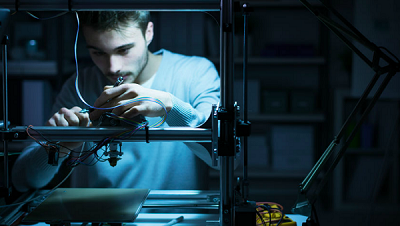Have you ever wonder what do ‘IronMan’, ‘The Hobbit’, ‘Jurassic Park’, ‘Avatar’, ‘The Muppets’, ‘ ‘Paranorman’, ‘The Avengers’ Terminator Salvation’, ‘Real Steel’ have in common? Well, apart from the fact these are all super hits these Hollywood films featured heavy 3D printing techniques.
Chuck Hull was the great man behind the invention of 3D printing, he invented in 1984 and now in our daily routine it is not just used by the reel world, but the real world too.
According to the latest news NASA researches are working on figuring out how to take 3D printing to space. The plan is to send robots to the lead of astronauts to build buildings and infrastructure on solar surfaces.
The costs have come down to a certain extent due to the widely used across industries. From apparels to manufacturing to healthcare 3D is everywhere. On the other hand, many of us still have no idea what are the dynamics of this industry and a variety of its use cases.
What is 3D printing?
It is is an advanced manufacturing technology that offers someone to generate physical objects from digital designs. It is a type of additive manufacturing where actual, three-dimensional objects are shaped by ‘printing’ layer upon layer of stuff to get the preferred shape and size.
How does it work?
A 3D printer takes digital CAD (Computer Aided Design) files as input and prints 3D objects as output, based on this data. These files include 3D information about the desired object, like shape, size and density.
Then printer digitally slices this 3D copy into hundreds of 2D layers, and prints the item by mounding one layer of material over another.
It has amazing results in contrast to conventional printing, as with 3D printing, complex designs that were previously unrealistic due to the limitations of traditional techniques, now they can be brought to life with minimum wastage and in little orbit of time with no trouble.
What is the future of 3D printing?
According to Wohler’s Report 2016,
The market size for 3D printing business stands at US$5.165 billion as of 2015, and is predictable to exceed US$30.19 billion by 2022.
Where is it heading for?
As the industry size is increasing day by day due to adoption of this technology, 3D printing is lined up to modify the face of consumerism.
Daily life products like cutlery, decor furniture, jewellery and possibly even food and branded clothing will be printed right inside the limits of home.




